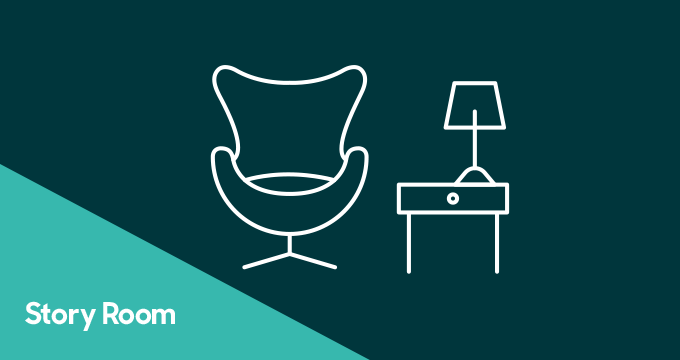Article • 5 min read
Channel changes score high with Ditzo’s online insurance customers
著者: Amy Derbedrosian
更新日: September 2, 2021
The phone rings often at insurance companies, and it was no different at Ditzo, a Dutch company that sells auto, health, and travel insurance online. Customers or claimants generally rely on the phone when the information they need isn’t readily accessible on the website, and approximately 90 percent of Ditzo’s customer service volume was through phone and email.
That’s why Ditzo’s decision to eliminate both email and voice as contact channels in early 2016 was a surprising one. It might even be called revolutionary.
Before this change, Ditzo’s customer service team worked standard business hours, between 9am and 5pm. There was an expectation that email queries were less urgent—customers sometimes waited as many as 10 days for a response. But Wouter de Vries, Performance Manager at Ditzo, knew the company could do better. After all, customers who were using Facebook Messenger to contact Ditzo got replies in just two hours. De Vries decided to take on the daunting job of figuring out how to improve every customer contact.
“It was my job to reorganize customer service with fewer people, without customer satisfaction going down,” de Vries explained. “And, we hoped, customer satisfaction would grow.” The next step was to reorganize staffing, and de Vries began by searching internally for digital customer service agents who were comfortable working with text messaging, social media, and live chat. So that Ditzo could deliver the timely responses it promised, he also extended customer service hours. The team now responds between 8:30am and 10pm, including weekends.
Overhauling the channel mix
de Vries started by looking closely at what customers wanted—convenience and quick replies. This made clear that email wasn’t the way forward, and since expanding phone support wasn’t scalable, de Vries decided to eliminate phone and email as contact channels. Instead, the company’s home page became a customer service portal, directing people to the right information and to different channels. Customers were already using social media and messaging channels like Facebook Messenger and WhatsApp to get quick replies, so Ditzo decided to encourage these channels and also add live chat to the mix, with a “call me back” option for those harder-to-resolve questions. Moreover, Ditzo promised a reply to every question within hours.
All these changes went into effect at the start of 2016, and the transition was a success. “We have only half the people we did before and can still manage to do all of this, using Zendesk,” he said.
Choosing the right tool for modern customer service
Ditzo implemented Zendesk Support as its new customer service tool at the same time de Vries refreshed the contact channels and staffing. Given his tight timeline, de Vries realized that he needed a tool that he could quickly set up, without reliance on other teams’ assistance or availability. Conversations with other Dutch companies and a software demo convinced him that Support was Ditzo’s best solution.
The company’s prior tool was an “old school” contact registration tool that required agents to do a lot of copying and pasting over from Facebook, Twitter, and WhatsApp. It was clunky and time-consuming and not aligned with their customers’ use of social media and messaging apps.
“The good thing is that now all of these just go straight into Zendesk,” he said. “Zendesk Chat and the “call me back” option are integrated into Zendesk Support, too.”
Better still, de Vries was able set up Support on his own, without any support from Ditzo’s IT department or from Zendesk. He trained others at Ditzo, noting, “Normally, when you start using a new program, of course IT is involved. The funny thing is that we didn’t really need them. I introduced a colleague to Support in ten minutes. It’s so easy to use.”
Though he says he’s “not really a geek,” de Vries appreciates the online data and analytics he now gets from Support. And live chat is his favorite channel, even if it’s second in popularity to WhatsApp among Ditzo customers.
Ensuring speedy responses
de Vries had Zendesk Support up and running within a week, and the instance fully configured within a month. The impact for both Ditzo and its customers was immediate. He explained, “Before implementing Zendesk, we had approximately 12,000 tickets each month. From the moment we started working in the new way, we went down to 7,000 tickets.”
That number has since dropped to between 5- to 6,000 monthly tickets for a customer base of 150- to 200,000 customers. What’s more, Ditzo’s customer service agents are meeting their new promised SLA times.
That makes for happy customers. Now measuring customer satisfaction for the first time, the team has seen their CSAT rise to 80 percent, and they’re well on their way to hitting their 85 percent goal. In an effort to be transparent, they even publish their CSAT on their website.

Success is contagious
Ditzo’s parent organization—one of the biggest insurers in Holland—was so impressed with Ditzo’s results that de Vries was asked to bring Zendesk Support into its other businesses. This time around, he’s working with a Zendesk success manager and mentor program to fine tune their support and to continue improving customer service.
Already, Zendesk has expanded to more departments within Ditzo and a sister company, a health insurer with a large customer service center. A leading European claims company that works with Ditzo is also interested in using Zendesk for customer service.
“The whole change has been a success,” de Vries said. “I don’t want to brag, but most of the bigger companies in Holland came to us to look at what we’re doing.”
Join the revolution, and learn more about Zendesk Support and Zendesk Chat
